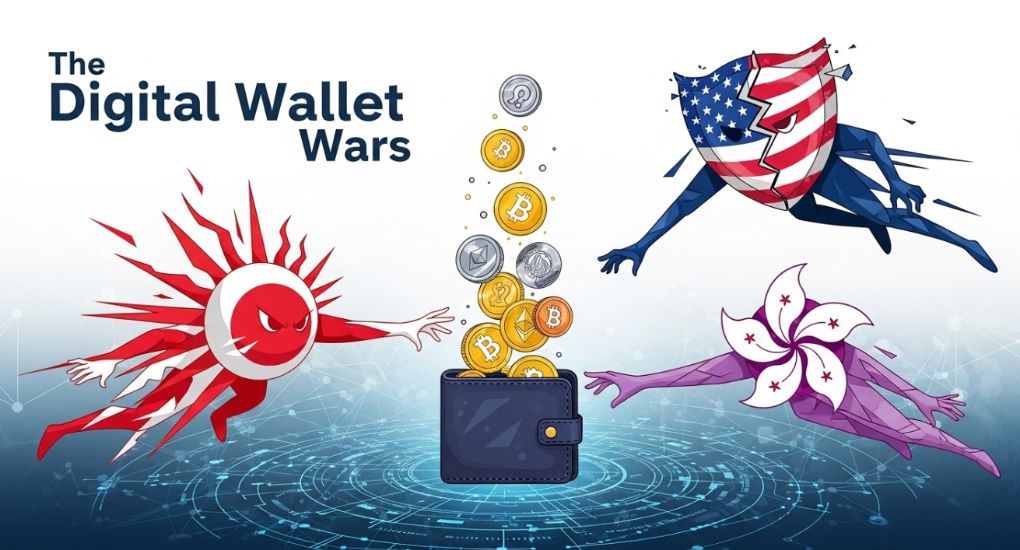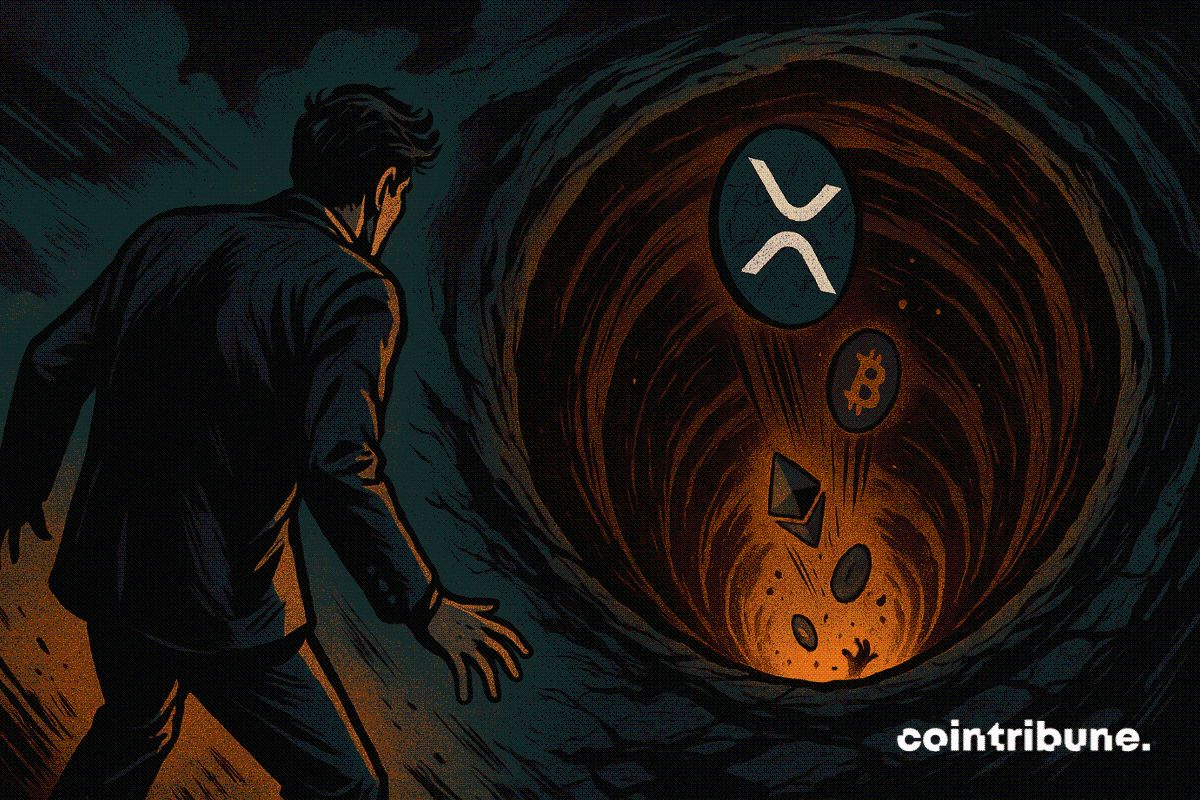Japan boldly embraces, the United States struggles to balance, and Hong Kong cautiously tightens—these three financial centers' digital currency regulatory paths are shaping the new global financial landscape of the future. From Tokyo to New York to Hong Kong, the regulatory game over digital currencies is unfolding in these three major global financial centers in distinctly different ways.
Three paths, three futures—the outcome of this regulatory race will reshape the global financial order.

01 Dramatic Changes in the Global Digital Currency Regulatory Landscape
2025 will become a watershed year for digital currency regulation. Major financial centers are introducing targeted policies, marking the transition of digital currencies from the periphery to the mainstream financial system.
In 2025, Japan’s Financial Services Agency (FSA) shifted from a conservative stance to aggressively promote institutional reforms allowing banks to directly hold and trade cryptocurrencies. Meanwhile, the U.S. Securities and Exchange Commission (SEC) launched a large-scale investigation into 212 listed companies, focusing on whether their bitcoin treasury strategies involved insider trading. In Hong Kong, although the Stablecoin Ordinance has officially taken effect, tech giants such as Ant Group and JD.com have suspended their stablecoin issuance plans under regulatory intervention.
These differences are not only reflected in the degree of bank participation, stablecoin regulation, and tax policies, but also reveal fundamental distinctions in how each party defines the nature of digital currencies.
02 Japan: The Radical Reformer Fully Embracing Digital Currencies
Japan is advancing digital currency regulatory reforms with unprecedented openness.
● Deep Bank Participation: The FSA is reviewing relevant regulations to allow banks to hold cryptocurrencies such as bitcoin for investment purposes. This policy shift will fundamentally change the current situation where banks are effectively prohibited from holding cryptocurrencies due to volatility risks.
At the same time, banking groups may be allowed to register as licensed "cryptocurrency exchange operators," directly providing trading and custody services. This reform will break the current restriction that banks must set up independent companies to participate in cryptocurrency businesses.
● Stablecoin Innovation: In the stablecoin sector, Japan has relaxed collateral requirements, allowing stablecoin issuers to use short-term government bonds and time deposits (up to 50% of reserves) as substitutes for 100% cash backing.
This change paves the way for Japan’s three major banking groups—Mitsubishi UFJ Financial Group, Sumitomo Mitsui Banking Corporation, and Mizuho Bank—to jointly issue yen-pegged stablecoins.
● Tax System Reform: To attract institutional investors, Japan has carried out large-scale tax reforms, setting a unified capital gains tax on cryptocurrency profits at 20%, replacing the previous progressive rate of up to 55%.
This makes Japan one of the most crypto-friendly jurisdictions in the world.
● Ban on Insider Trading: More notably, Japan is amending the Financial Instruments and Exchange Act (FIEA) to prohibit insider trading of digital assets. The new regulation will empower the Securities and Exchange Surveillance Commission (SESC) to investigate suspicious trades and impose fines.
03 United States: A Contradiction of Enforcement and Innovation
Compared to Japan’s systematic reforms, the U.S. digital currency regulatory landscape is much more complex.
● Large-Scale Investigations: In early 2025, the SEC and the Financial Industry Regulatory Authority (FINRA) jointly investigated 212 listed companies that announced bitcoin treasury strategies.
Regulators focused on abnormal stock price fluctuations before major policy announcements. The investigation involved companies planning to raise about 102 billion USD for cryptocurrency allocation.
● Typical Case: During the investigation, listed company Eightco saw its stock price soar over 5,600% in a week after announcing plans to increase holdings of Worldcoin and consider adding Ethereum to its treasury, drawing special attention from the SEC.
This case highlights the seriousness of insider trading in the digital currency sector.
● Regulatory Framework Restructuring: Under the Trump administration, the U.S. is restructuring its digital asset regulatory framework. The "Executive Order on Ensuring Leadership in Digital Financial Technology" signed in January 2025 announced the construction of a new digital asset regulatory system and explicitly banned the development of central bank digital currencies.
At the same time, the executive order repealed the previous administration’s digital asset policies and established a Presidential Working Group on Digital Asset Markets led by the White House "Special Advisor on AI and Crypto Affairs."
● Regulatory Uncertainty: Nevertheless, the SEC’s attitude toward cryptocurrency regulation in 2025 remains "elusive." Although regulators have shifted from tough enforcement to systematic rulemaking, the crypto industry is still in a legal gray area.
04 Hong Kong: A Cautious Compliance Testing Ground
Hong Kong has taken a different approach from Japan and the U.S., characterized by active legislation and cautious advancement in parallel.
● Stablecoin Regulatory Breakthrough: In 2025, Hong Kong passed the Stablecoin Ordinance, establishing a licensing regime for fiat-backed stablecoin issuers. The ordinance officially took effect on August 1, 2025.
According to the new rules, any issuer of Hong Kong dollar-backed stablecoins, whether based in Hong Kong or overseas, must obtain a license from the Hong Kong Monetary Authority.
● Mainland Regulatory Intervention: However, as Hong Kong established its stablecoin regulatory framework, Chinese tech giants including Ant Group and JD.com have suspended their plans to issue stablecoins in Hong Kong.
These companies suspended their stablecoin issuance plans after receiving instructions from the People’s Bank of China and the Cyberspace Administration of China. The underlying reason is that regulators are concerned about allowing tech companies and brokers to issue any form of currency.
● Sandbox Program and Application Status: As early as 2024, the Hong Kong Monetary Authority launched a "sandbox program" for stablecoin issuers, selecting three groups of participating institutions from over 40 applications.
As of the end of September 2025, a total of 36 institutions had submitted stablecoin license applications. Hong Kong Monetary Authority Chief Executive Eddie Yue said, "The licensing threshold for stablecoin issuers is quite high, and only a few licenses are expected to be issued initially."
05 Comprehensive Comparative Analysis of the Three Countries’ Policies
There are significant differences in the digital currency regulatory paths of Japan, the U.S., and Hong Kong. The table below clearly compares the core policy distinctions among the three regions:
Regulatory Dimension | Japan | United States | Hong Kong |
Bank Participation | Allows banks to hold and trade cryptocurrencies | Strictly restricted, with focus on investigating banks’ crypto transactions | Mainly specific banks regulated by the Monetary Authority |
Stablecoin Regulation | Allows 50% non-cash reserves, promotes yen stablecoins | Case-by-case review, lacks unified framework | Mandatory licensing system, strict segregation of reserve assets |
Tax Policy | 20% unified capital gains tax | Complex and unclear | Specific policies not yet clear |
Insider Trading Regulation | Explicitly prohibits crypto insider trading | Extended application of traditional securities laws | No specific provisions yet |
Regulatory Orientation | Actively embraces, systematic integration | Coexistence of enforcement and innovation, lacks clear framework | Legislation first, cautious advancement, sandbox testing |
Main Concerns | Systemic risk control | Investor protection and market manipulation | Currency issuance rights and financial stability |
The comparison shows that Japan has adopted the most actively open attitude, fully integrating digital currencies into its existing financial system; the United States swings between enforcement and innovation, lacking a consistent framework; while Hong Kong prioritizes legislation, maintaining caution while actively exploring.
The differences in regulatory paths among the three countries stem from their respective financial environments, regulatory traditions, and political systems.
● Japan’s Choice: Japan’s aggressive open strategy is driven by its ambition to enhance Tokyo’s status as an international financial center through digital currencies. At the same time, the joint promotion of the yen stablecoin project by Japan’s three major banking groups reflects the intention of traditional financial institutions to lead digital currency innovation.
● America’s Dilemma: The complexity of U.S. regulation stems from its multi-agency regulatory system and federal structure. The large-scale investigations by the SEC and FINRA, as well as the Trump administration’s executive order on digital assets, reflect the U.S. attempt to address market abuse without hindering innovation.
● Hong Kong’s Balancing Act: Hong Kong’s cautious approach reflects its unique status as a Special Administrative Region of China. On one hand, Hong Kong hopes to consolidate its status as an international financial center through legislation such as the Stablecoin Ordinance; on the other hand, concerns from mainland regulators about privately controlled digital currencies have set boundaries for Hong Kong’s exploration.
06 Regulatory Competition and Future Trends
The regulatory paths of Japan, the United States, and Hong Kong not only reflect current policy choices but may also shape the future global digital currency landscape.
● Japan’s comprehensive reforms give it a head start in attracting institutional investors. Measures such as tax reform and insider trading bans have made Japan one of the most attractive markets for institutional capital.
● The United States, despite regulatory uncertainty, remains one of the world’s largest digital currency markets. The Trump administration’s executive order suggests a possible shift toward a more inclusive regulatory stance, but this transformation will be slow and complex.
● Hong Kong is at the forefront of stablecoin regulation, and its clear licensing regime provides the industry with a transparent compliance framework. However, intervention from mainland regulators may to some extent limit Hong Kong’s room for exploration in the digital currency field.
The competitive landscape of the future may change as countries coordinate their regulations. Japan’s move to ban crypto insider trading and the U.S. SEC’s investigations into digital assets may become the foundation for global regulatory standards.



